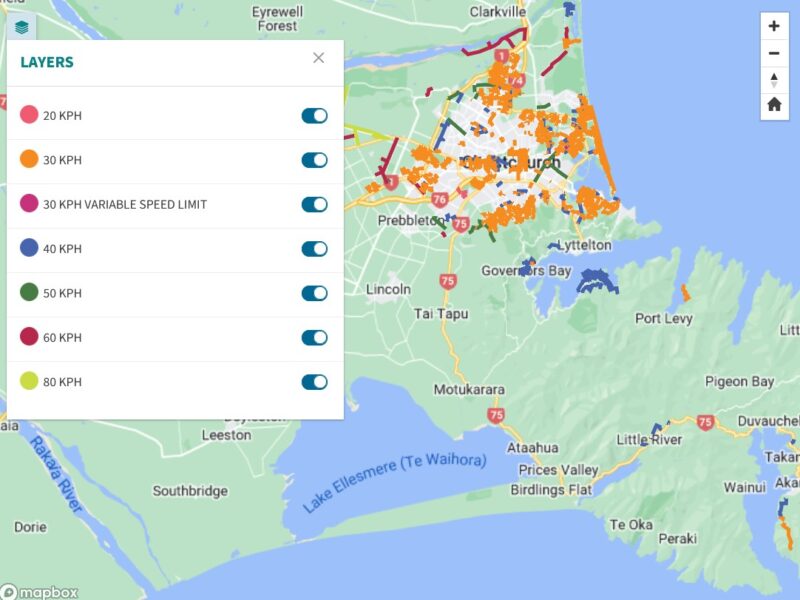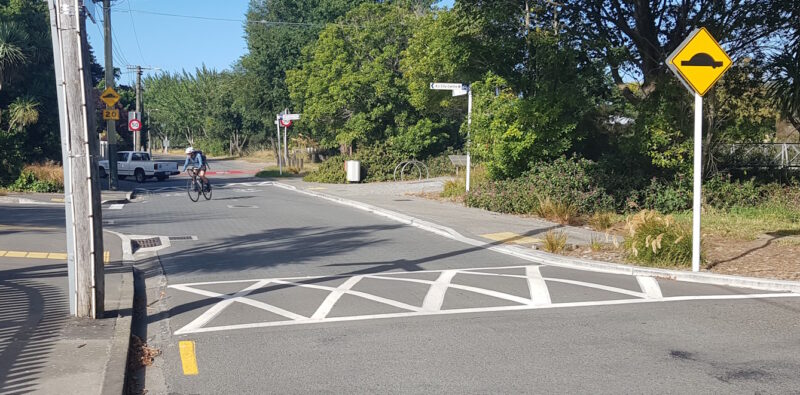It doesn’t seem that long ago that Christchurch oversaw a whole raft of suburban lower speed limits, proposing 30 and 40 km/h streets to many of our neighbourhoods and school zones. Those new speed limits are hitting the streets about now, but now it’s time to consider the wider speed management picture for Christchurch City. So the Council is currently consulting on their Draft Safer Speed Plan, with submissions due by Wed 25th Oct.

While there are benefits to all road users when it comes to having safer speeds, I probably don’t need to point out to most of you that cycling is a key beneficiary. Whether it’s biking on a 30km/h suburban street or riding around a 60km/h Banks Peninsula country road, lower traffic speeds greatly reduce the likelihood and severity of any crash that could happen. This is particularly important on lots of quieter roads and streets where you couldn’t easily justify building some specific cycle facilities.

The Speed Management Plan is a 10-year long-term strategy for bringing all roads to safer limits. In the first three years (2024-27), the main priorities are:
- Marae
- The remaining neighbourhood streets and settlements in Banks Peninsula
- Town centres, local centres and neighbourhood centres
- The rest of the central city

After that, the focus will shift to the main connecting roads and streets where physical changes also need to be made.
It’s not just about changing posted speeds either. In a lot of places the new limits will be supported by speed management infrastructure such as raised platforms at crossings and intersections, speed humps, additional signs/markings, and other traffic calming features. And there will also be ongoing education and enforcement (including new speed cameras).

The Council consultation page provides detailed plans showing the areas that will be affected in the future. Needless to say, there’s a lot to like about the proposals, so show your support by having your say by Oct 25th!
What do you think about the draft Speed Management Plan?


The whole plan is a heep of rubbish designed by the nohopers in council. There will be many more accidents and in particular tail end crashes as drivers will be so busy looking for speed signs. The safest way is one speed for the whole city that drivers can concentrate on the traffic ahead.
30 everywhere it is then…
Seriously though, streets should be designed to be intuitively travelled at the intended speed. Doing 50 on a busy central or minor residential street should feel dangerous to the person driving. Width, bumps, chicanes, markings, vegetation, curbs, should be the primary communicators of speed.
Yes, those communicators have been gradually implemented in many places over the last few decades. The problem areas that remain without such indicators could benefit from a reduction in speed limit. Even if the limit is still exceeded evidence shows there is still a reduction nevertheless , which is the aim. How good would it be if arterials were set at 40kph and everywhere else 30kph. Not too complicated and not too different from current speeds when traffic is heavy anyway. The fear of nose to tails is just that, fear. The evidence tells a different story. I’m reminded of the outcry when the bus interchange was opened. Built to a design used throughout the world, the thought of having reversing busses in little ol’ Christchurch however was going to cause death and destruction. Like the Park Terrace cycleway, it proved to be nothing but a storm in a teacup. The suggestion of slowing speeds to improve safety seems to have the same effect on people. Why ?
As someone whose day-job involves analysing the safety effects of speed management measures, I can tell you that almost without fail every speed reduction in NZ, urban or rural, has seen reductions in crashes and (more importantly) casualties when they’re implemented – that includes the ones already done in central Chch (down 46%) and suburban areas (down 40-80%). The behaviour of looking for a speed sign (or your speedo even) doesn’t change just because speed limits change.
If keeping on top of signs is too much for you as a driver, you should lose your license. It’s basic situational awareness to note signs (and pedestrians, and cyclists, and dogs, and that flicker of movement in a driveway, etc etc etc).
Whenever safety changes are proposed, anti-change people come out of the woodwork claiming that actually the new arrangement will be less safe, as though safety-minded people hadn’t been carefully weighing up the pros and cons for ages. This comment seems like part of that pattern.
These speed restrictions are a really great idea, but there are far too many motorists still exceeding these limits. There needs to be hidden relocatable speed cameras otherwise there’s no incentive for motorists to slow down as there is little evidence of the police doing any enforcement.
There’s only so many places you can have cameras at any time, so it becomes a game of “whack-a-mole” – installation of speed cameras is covered in the Plan though. Also the second tranche of the Plan (from 2027) sees the introduction of various traffic calming measures to help lower speeds – they take time and money though, which is why they come later in the programme.
But even without engineering and enforcement, there’s plenty of evidence showing that people do slow down a little with changes in posted limits alone (roughly 2-3kmh for every 10kmh change) – and even if they’re technically not complying with the new limits, those small drops in travel speeds make a big difference to safety stats…